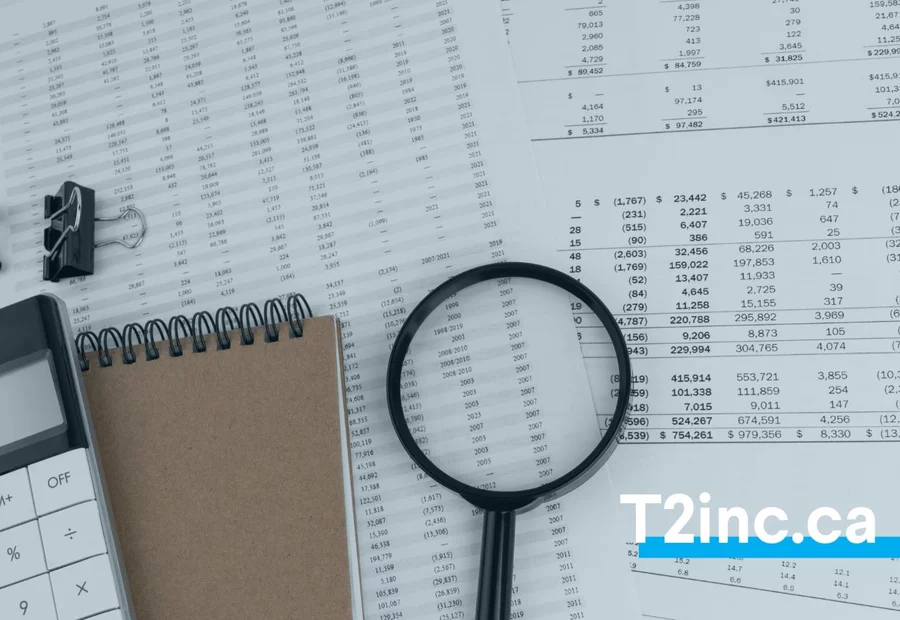What is a bank reconciliation, and how should a business owner do it?

Bank reconciliation is an essential part of the accounting process for any business owner who wants to stay in control of their finances. Whether you're self-employed or running a small business, checking that your accounting records match your company’s bank statement isn’t a luxury — it’s a necessity.
In this article, we explain what a bank reconciliation statement is, why it’s important, and above all, how to do bank reconciliation simply, effectively and without stress. You’ll also find a sample bank reconciliation, useful tools to choose from, and practical tips to avoid common mistakes.
Definition: what is a bank reconciliation?
Bank reconciliation is the process of ensuring that the transactions recorded in your company’s bank account statement match those in your general ledger. The goal? To verify the cash balance, identify any discrepancies, and complete the reconciliation with a reliable figure that reflects all items processed by the bank.
This process helps ensure the accuracy of your financial records by validating every deposit, payment, bank transfer, and even the interest earned or bank service charges that may appear on the statement.
Put simply, it ensures your books and your bank’s records are telling the same story.
What’s the difference between bank reconciliation and account reconciliation?
None. Both terms are used interchangeably to describe the same process. In Quebec, we often say “bank reconciliation,” while “account reconciliation” is more common elsewhere or in certain accounting systems.
Regardless of terminology, the principle remains the same: reconcile your bank account regularly to maintain reliable and compliant accounting.
Why is bank reconciliation important for your business?
Many business owners wait until the end of the month, or even the year, to review their accounts. But doing a bank reconciliation on a regular basis, ideally monthly, helps you stay in control and avoid surprises.
1. Detect errors and anomalies
It’s not uncommon for issues to go unnoticed: unrecorded invoices, payments not yet cleared, duplicated entries, or bank errors. Without reconciliation, these mistakes can distort your balance sheet and business decisions.
Performing a bank reconciliation helps you spot these issues quickly. For example, if you forget to record a deposit, your reported income will be too low. This might temporarily reduce your corporate taxes, but could result in penalties if discovered during an audit by the CRA or Revenu Québec.
2. Prevent fraud and ensure compliance
Noticed unusual activity or missing transactions? A bank rec allows you to catch signs of fraudulent transactions, unauthorized payments, or incorrect entries.
It’s a smart way to protect your bank account and strengthen your compliance if your business is ever audited.
3. Better cash flow management and financial decisions
With an accurate bank account balance, you’ll know exactly what funds are available. This helps you schedule supplier payments, plan investments, and make better-informed financial decisions.
Bank reconciliation process: How to reconcile your bank statement and bank account to keep your records accurate
Here’s how to perform a bank reconciliation efficiently — whether you do it by hand or with software.
Step 1: Get your bank account statements
Download your monthly bank statement or request a copy from your bank service. Make sure to include all relevant data: deposits, bank fees, transfers, and interest income.
If your accounting software supports it, you can even import bank statements directly.
Step 2: Compare bank transactions with your accounting records
Go through each transaction listed on your company’s bank account and check that it matches what's in your mandatory accounting records. Watch for deposits in transit, payments that haven’t cleared the bank, or unrecorded bank fees.
You can do this manually in Excel or with reconciliation features in your accounting system.
Step 3: Identify discrepancies and understand their origin
A date difference, a payment not yet cashed, an incorrect amount? Analyze the differences. Causes may be legitimate (e.g. banking delays) or may reveal an error or omission.
Step 4: Complete the reconciliation in your accounting software
Once you’ve addressed all issues, you can achieve the reconciliation. Record any reconciliation adjustments, note the date, and keep a copy of the finalized reconciliation statement as part of your financial records.
Example of a bank reconciliation for a business owner
Let’s walk through a simple example of a bank reconciliation to see how the process works in real life.
- Bank statement balance (end of month): $10,500
- Accounting records balance (general ledger): $11,000
- Difference observed: $500
After reviewing your records, you realize that a deposit made on the 30th of the month has not yet appeared on the bank statement. This is a deposit in transit — a payment that was received and recorded in your books, but hasn’t cleared the bank yet.
Once this transaction is identified and documented, you can include it as a temporary adjustment during the reconciliation. The adjusted bank account balance becomes $11,000, and your books are now in line with the bank’s records.
🔍 These situations are common and show why it’s important to perform a bank reconciliation regularly. Without it, a $500 difference could be misinterpreted as an error — or even a loss.
What tools or software should I use for bank reconciliation?
Manual reconciliation takes time, especially with multiple bank accounts. To streamline the process, consider accounting software that includes a bank reconciliation feature.
Here are some accounting software popular with Canadian business owners:
- QuickBooks Online: automatic bank feed imports, real-time alerts.
- Sage 50cloud: good for companies looking for a hybrid solution (cloud + local).
- Xero: intuitive interface, very popular with modern SMEs.
- Wave: free, suitable for the self-employed.
- Zoho Books: a good alternative for small teams. The important thing is to choose a tool that matches the size of your company and your management habits.
Common mistakes to avoid
- Forgetting to include outstanding checks or items yet cleared
- Ignoring bank service charges or interest earned
- Reconciling only once a year
- Failing to understand discrepancies before validating
- Skipping backup of your reconciliation statement
Bank reconciliation: the key to sound business accounting
Regular bank reconciliation is a smart habit for any business owner. It helps you catch bank errors, prevent fraud, and keep your books clean-all while preparing you for tax season with confidence.
At T2inc.ca, we specialize in preparing T2 corporate income tax returns for incorporated businesses in Canada. And to deliver accurate, optimized, and compliant returns, your financial records need to be clean and up to date. That’s why we work with a network of trusted accounting partners who can help you with bookkeeping services and other key components of your business accounting.
Need help reconciling your bank accounts or organizing your bookkeeping? Contact our network to get the support your business deserves.
FAQ – Everything you need to know about bank reconciliation
How often should I perform a bank reconciliation?
Ideally, every month. High-volume businesses may even reconcile their checking accounts weekly to ensure accuracy.
Do I need to keep reconciliation documents?
Yes. Retain reconciliation statements, bank statements, and supporting documents for at least 6 years.
Can I do a bank reconciliation without software?
Yes, using Excel is possible, but reconciliation tools in accounting software save time and reduce errors.
What if the balances never match?
Investigate the issue. Look for missing transactions, duplicate entries, or bank errors. If needed, consult your accountant.
Can I outsource bank reconciliation?
Absolutely. Many businesses delegate this task to bookkeepers or accounting services, such as those recommended by T2inc.ca.
- Definition: what is a bank reconciliation?
- Why is bank reconciliation important for your business?
- Bank reconciliation process: How to reconcile your bank statement and bank account to keep your records accurate
- Example of a bank reconciliation for a business owner
- What tools or software should I use for bank reconciliation?
- Common mistakes to avoid
- Bank reconciliation: the key to sound business accounting
- FAQ – Everything you need to know about bank reconciliation
Contact our experts
Have a question? Need help? Fill out our online form to get help from our experts.
Contact usNeed more help?
Contact us by filling out our form
Are you interested in our services, but would like more information before taking the plunge? Contact us today and one of our tax accountants will be in touch to help you.
At T2inc.ca, we're committed to helping business owners manage their company's tax affairs so they can grow their business.



